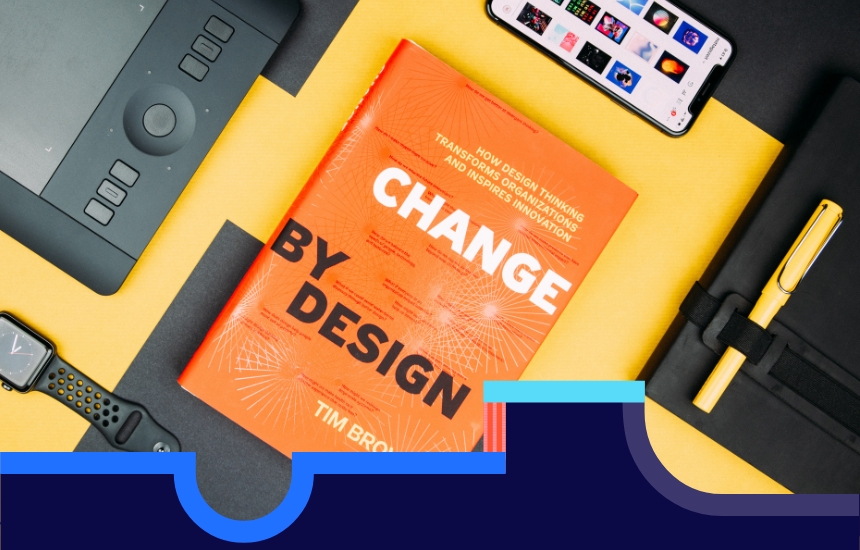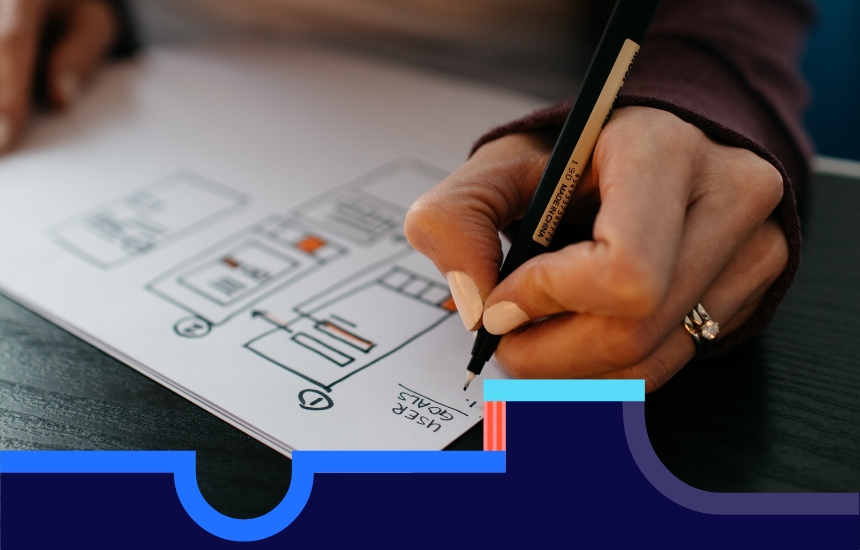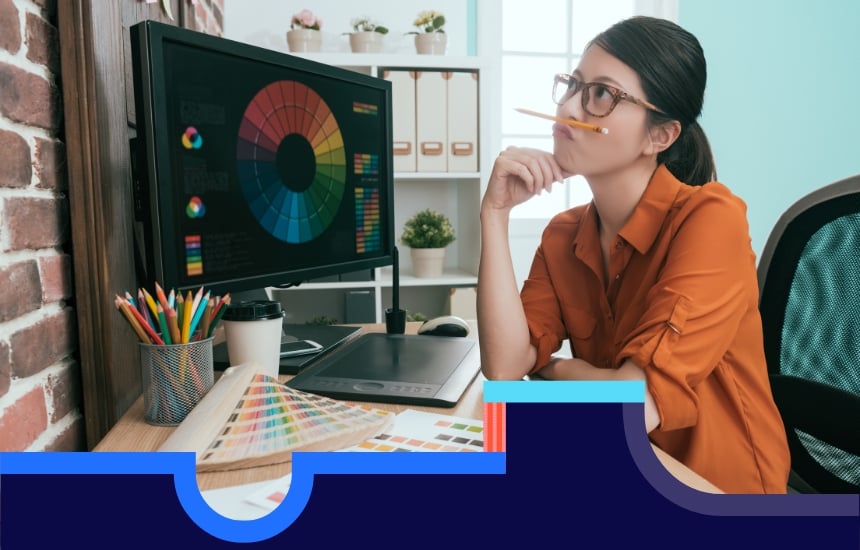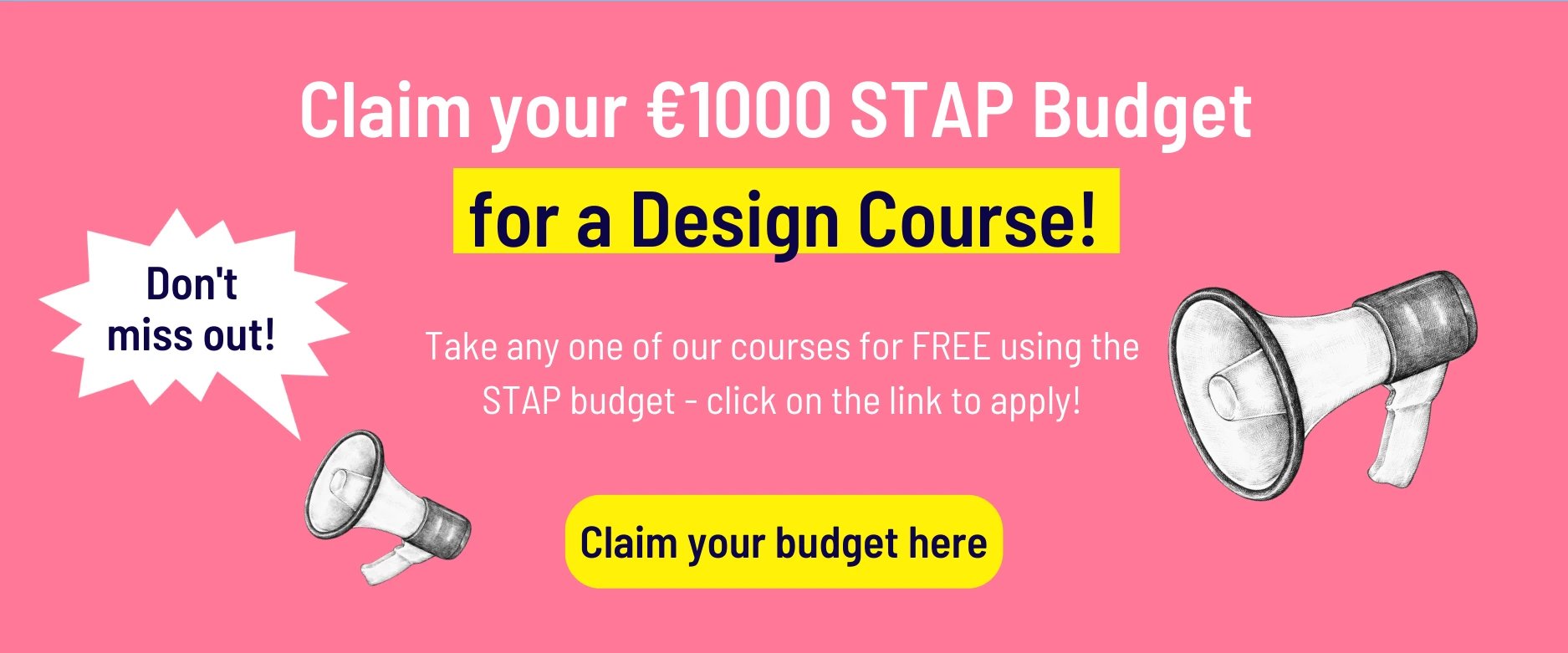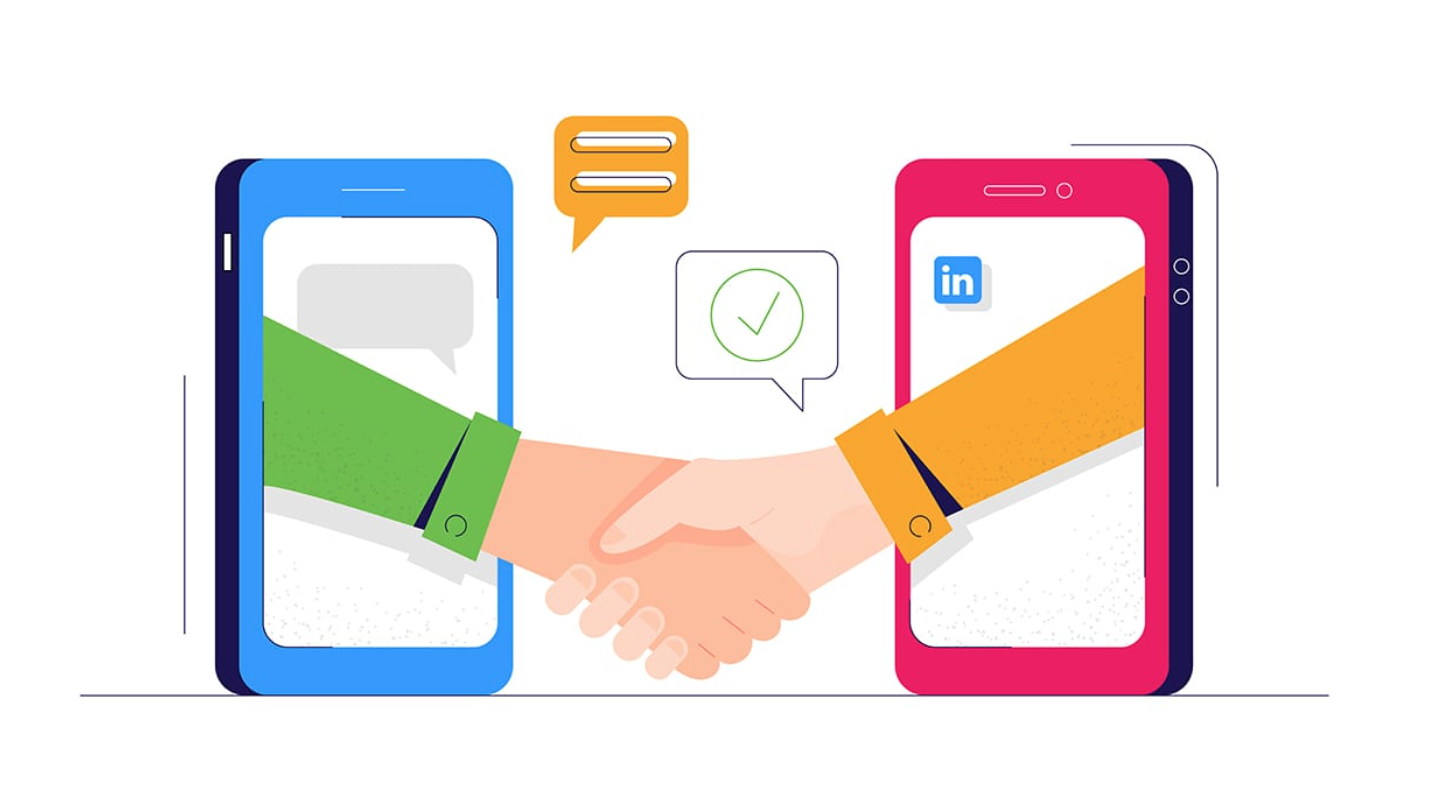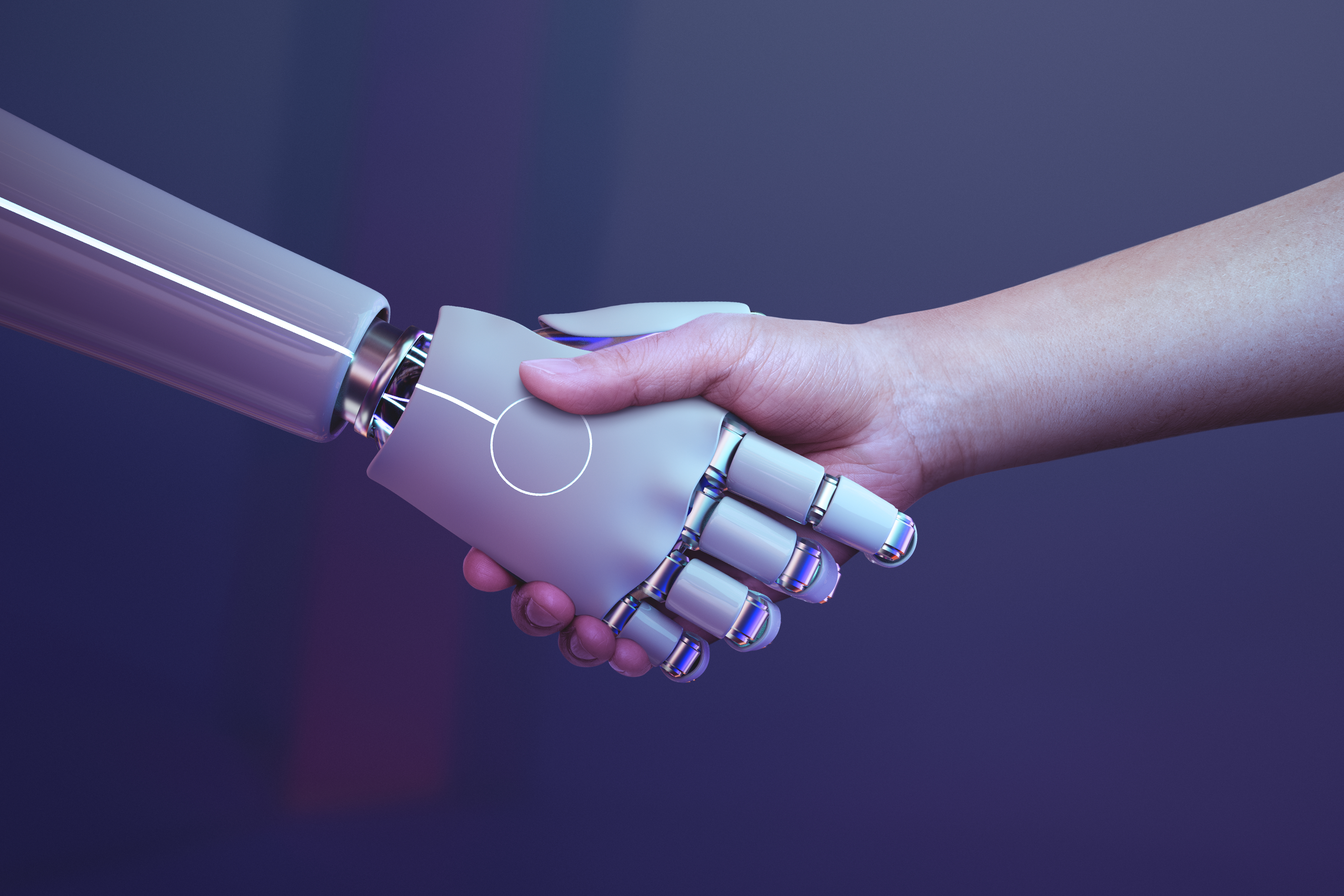
Are you considering a career in the fast-growing field of UX design? We don’t blame you!
UX designers are the wizards responsible for managing the billions of daily interactions between actual human users, and products or services. Whenever you engage with any physical or digital product, you can bet there’s a UX designer behind the scenes, pulling the strings.
UX design incorporates elements of psychology, design, marketing, business and technology. This makes it a fascinating, multidisciplinary field, so let’s dive into it...
What does a UX designer actually do?
Ask any UX designer this question and you’ll likely be met with a laugh. Most UX practitioners are asked this question on a weekly basis by well-meaning relatives, friends and strangers they meet in the pub. Surprisingly, it’s also a question frequently asked by prospective employers.
The problem is that most people have a general understanding of the value of UX design, but there’s a bit of confusion around what a UX designer’s job actually entails.
This is something you need to consider when embarking on any new career path, otherwise you may like the job in principle, only to find you don’t like it in practice.

So, let’s break it down.
5 tasks of a UX designer
The role of the UX designer is to ask: “how do users feel when interacting with a product?”. To put it plainly, what is their (drumroll..) ‘User Experience’? The end goal of UX design is to make that experience easy and enjoyable, and keep users coming back for more.
With that in mind, let’s get down to the nitty gritty of what a day in the life of a UX designer actually looks like. Designing user experiences is an ongoing, cyclical process which involves the following tasks:
- Researching users: Getting to know the users is the first step in UX design. You’ll conduct interviews, surveys, and competitor research to find out who the users are and what they need from the product.
- Developing user personas: Next, you’ll use the fruits of your research to generate detailed user profiles. Mapping out what different people expect or value in a service will tell you what kind of content you need and give you an idea of how it should be presented.
- Creating flows and wireframes: Now, you can start mocking up designs using 2D wireframes and flows which show the core functions of the product, and the steps the user will follow to achieve their goals.
- Prototyping and user testing: This is where you’ll start to create a very basic version of the product, and crucially, gather feedback from users. The information gathered at this stage informs the final design of the product.
- Visual design: You’ll work closely with UI designers and developers to ensure your planned user experience comes through in the final product.
As a UX designer, you’ll be an integral part of a dynamic team. You’ll usually work through several iterations of the design process, alongside business people, developers and visual designers, to fine tune the users’ experience. Your primary role as part of that team is to advocate for the end user, in a bid to close the gap between people and technology.

Sound good so far? Let’s find out more.
Is UX Design a good career choice?
The short answer is: yes!
If you’re a people person with a passion for creativity and an unrelenting fascination with the way people engage with the world, UX design might be your calling.
Besides being a personally rewarding job, a career as a UX designer can afford many other benefits. Of course, no job comes without its downsides.
3 pros and cons of the UX design job
UX designer pros:
- It’s a varied role. No two days are the same!
- Creativity. From initial concept to finished product, you can witness your design come to life.
- You get to work as part of a thriving, dynamic team.
UX designer cons:
- You MUST work as part of a team. This is an inherently collaborative role.
- You may have limited say in visual aspects of the design (as this is typically the domain of the UI designers).
- You may spend a lot of your time convincing stakeholders of what is needed to create an optimal user experience.
UX designer salary
Money isn’t everything, but it is important. Fortunately, that is unlikely to be a problem if you’re interested in UX design.
In practically every country around the world, UX designers earn an above-average salary. The amount you can earn will depend on your experience, qualifications, who you work for and where you work.
As a UX designer working in the UK, you can expect to earn around the following:
Low end - £26,000
Average salary - £47,000
High end - £85,000
What are the career opportunities for UX designers?
Why become a UX designer? Put simply, because few other industries offer such a wealth of opportunities.
One of the most exciting things about a career in UX design is the variety of different job roles to choose from. UX designers can be found working for small start-ups and for multinational corporations.
The job descriptions vary quite dramatically too! Applicants choose a role that best suits their particular area of interest, whether that’s the visual aspect of design, or data collection and analysis.
Working as part of a UX design team allows you to focus on one aspect of the process, like research, or UX copywriting. The possibilities are endless.
UI vs UX design, or both?
Both UX and UI design are centred around human experience. The main difference between the two roles is that UX focuses on the whole picture, while UI is primarily concerned with aesthetics (e.g. colour, text, imagery, animations). UI design also refers exclusively to digital products, whereas UX design covers intangible services and physical products.
Many organisations look for designers that can fulfil both the UI and UX role. If you’re especially interested in the visual aspect of design and are hoping to work with digital products, this may be a viable option for you.
Are UX designers in demand in 2021?
The tech industry has recovered better than most in the wake of the COVID-19 pandemic. While many people are experiencing career uncertainty, the future is looking bright for UX designers.
UX design market statistics
According to a survey conducted in late 2020:
- 87% of department heads say that hiring new UX designers is a top priority.
- 40% say they intend to double their UX team over the next 12 months.
- The demand for new UX designers is expected to be highest in healthcare, fitness and wellbeing, entertainment, delivery services and e-learning.
What qualifications do you need to be a UX designer?
The good news is that these days, you don’t need a university degree or diploma to get started in UX Design.
Immersive UX Design courses exist to give people a jumpstart in their UX Design careers without any previous experience. These comprehensive courses usually last between 3 and 12 months, depending on the pace.
You’ll cover topics such as:
- UX design principles
- Behaviour psychology
- User research and testing
- Wireframing and prototyping
- Essentials of UI design
- How to build your UX Design portfolio and CV
Interested in kick starting your UX Design career with an immersive course? Our immersive course with personalised coaching has got you covered.
What are the traits of a good UX designer?
UX design is a people-oriented field. The best UX designers are driven to understand why people behave as they do, and what motivates them. To become a UX design master, you’ll need the following traits:
- A passion for problem solving.
- Exceptional communication skills.
- The ability to listen and empathise.
- An acute attention to detail.

How long does it take to become a UX designer?
This depends almost entirely on where you begin your journey. Coming from a related career, you may be able to take an immersive UX course that gets you job-ready in as little as 12 weeks.
How to become a UX designer: a step-by-step guide
Gaining practical experience and building a portfolio are the two most important things you can do to land a job as a UX designer. Theory education is essential, but hands-on experience is what really matters to employers.
8 steps to become a UX designer
- Find out everything you can about the role.
The goal here is to answer the question: is UX design really for me? Listen to podcasts, look for any content aimed at newbies, investigate the history of the field, find out where it is and where it’s going. If you’re still onboard, progress to step 2.
- Get to grips with UX principles.
Start learning about design best practices and UX principles. These are the building blocks of your education and training as a budding UX designer.
- Study key design processes and methods.
If principles are your “why”, methods are your “how”. Learn about the processes used during research, design, testing and implementation.
Here’s where things get really exciting! Make sure you shop around. Choose a course that unites theory and practice by encouraging hands-on learning, so you can start to build a portfolio.
- Practice!
It’s time to start flexing those UX design muscles. Consider voluntary UX design work for charitable organisations, as this will build your portfolio and provide valuable references. Undertake re-design projects for fun in your own time. Most importantly, keep notes of everything you do.
- School yourself in the tools of the trade.
Learn how to use research, prototyping and testing tools. Familiarising yourself with the tools of the trade will smooth out the onboarding process and make you more attractive to potential employers.
- Develop your portfolio.
Your portfolio is your golden ticket. Be sure to document any and all UX design tasks you’ve completed, and don’t scrimp on the details. It should be bursting with case studies to demonstrate your skills and experience to employers. Remember to include your processes:
- What was the problem?
- What was your solution, and why?
- Was it successful?
- Join the UX design community.
Never underestimate the value of networking, when it’s done right. Meeting people from the UX design community should be more than a glorified business card-exchanging exercise. The goal is to form meaningful connections. Join online communities, reach out to experienced UX designers, or ask co-workers out for coffee. You’ll gain valuable insights about the industry and you may even get to be the first foot in the door when job opportunities arise.
Can you learn UX design on your own?
It is entirely possible to learn UX design on your own. But should you?
The most successful learning paths usually combine self-teaching and formal education. Even if you cover all the basic theory yourself, you will undoubtedly benefit from taking a UX design course designed by industry professionals, that encourages you to apply what you’ve learned.
What are the best ways to study UX design?
Learning an entirely new discipline can be daunting - where do you start? The good news is there are a wealth of fantastic resources available to budding UX designers. Here are a few avenues to consider:
UX design books
Hooked: How to Build Habit-Forming Products - Explores the design tactics used to build engagement.
Universal Principles of Design - Covers 125 laws and principles behind good UX.
Don’t make me think - Offers clear guidance on enhancing ease of use in digital products.
Blogs for UX designers
Top UX influencers to follow
Kevin Hawkins - Former UX lead at Booking.com, PwC, EY, Capital One, Gap Inc. He is also the lead trainer and coach of Growth Tribe’s UX Design Immersive Course. Follow @kevinhawkinsdc
Jeff Gothelf - Author of Lean UX. His UX methodology is used by some of the most prominent SaaS companies worldwide. Follow @jboogie
Jared Spool - Writer, researcher, educator and one of the biggest names in the UX field. Follow @jmspool
Lizze Dyson - Founder of Ladies that UX, a female UX community with members in more than 55 cities around the world. Follow @lizziedyson
Katie Dill - Former director of UX design at AirBnb and the current VP of design at Lyft. A thought-leader and regular speaker at UX conferences. Follow @lil_dill
Future-proof your career with UX design
The multi-disciplinary nature of a UX designer’s job makes it a great choice for career changers with experience in related fields, like product design, web design, or even psychology. Given the above-average salary which most entry-level UX designers enjoy, it’s also a smart career path for new graduates and up-and-comers with little to no professional experience.
However and whenever you enter the field, UX design is practically guaranteed to be a creatively-rewarding, lucrative and future-proof career - if you’ve got what it takes.
Are you ready to start your UX journey? Apply to our next UX Design Immersive Course!
Categories
- Business & Innovation (72)
- Growth & Marketing (61)
- Data & Analytics (25)
- UX Design (13)
- Alumni Stories (11)
- Artificial Intelligence (1)
Related articles
Latest articles
Boost your Revenue Growth using LinkedIn Social Selling
In a digital age where connections mean everything, leveraging...
The Power of Collaboration: Enhancing Team Performance Tactics
As organisations navigate complex challenges and strive for...
The Ultimate guide to boost organic growth in 2024
Imagine organic growth as the business equivalent of sculpting...
The best 2024 Business Development Guide
What exactly is business development, and how does it differ from...





